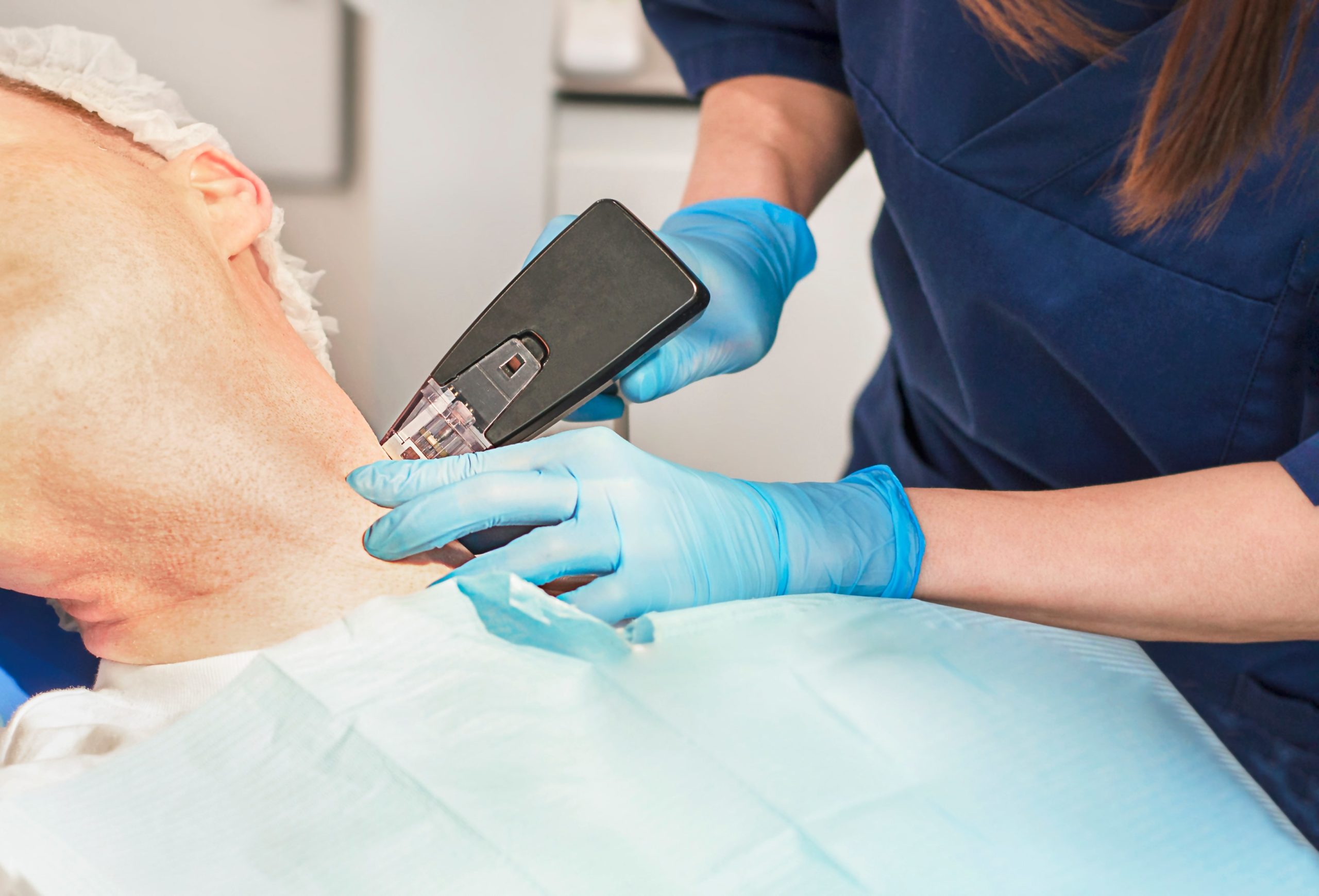
Toxins, also known as neurotoxins or neuromodulators, commonly associated with aesthetic treatments, often evoke intrigue and apprehension. While their use in cosmetic procedures has gained popularity over the years, misconceptions about their safety and efficacy persist. These misconceptions can overshadow the genuine benefits they offer when administered correctly. As with many medical treatments, understanding the science and facts behind neurotoxins can dispel myths and alleviate concerns. This knowledge empowers individuals to make informed decisions about their aesthetic choices.
What are Neurotoxins?
Neurotoxins are naturally occurring or synthetic substances that interfere with the transmission of nerve impulses. By doing so, they can produce a temporary reduction in muscle activity. Regarding aesthetics, neurotoxins can diminish wrinkles and fine lines, giving the skin a more polished and youthful look.
- Botox (Botulinum toxin type A): Perhaps the most well-known of all neurotoxins, Botox comes from the bacteria Clostridium botulinum. By injecting it into selected muscles in small amounts, Botox can prevent the release of acetylcholine, a neurotransmitter that causes muscle contraction. This results in muscle relaxation and a reduction in the appearance of dynamic wrinkles, such as frown lines and crow’s feet.
- Dysport (abobotulinumtoxinA): Like Botox, Dysport is another form of botulinum toxin type A. While the core mechanism of action remains the same—blocking nerve impulses to reduce muscle activity—Dysport may diffuse more than Botox, making it suitable for treating larger areas. However, the differences in diffusion can also mean that choosing the right product for the specific treatment area and the desired outcome is essential.
- Xeomin (incobotulinumtoxinA): Xeomin is a unique neurotoxin in that it is “naked,” meaning it doesn’t contain any additives or proteins other than the botulinum toxin type A. This can reduce the likelihood of patients developing resistance or antibodies to the treatment. Like its counterparts, Xeomin works by blocking the release of acetylcholine to reduce muscle activity and smooth wrinkles.
While Botox, Dysport, and Xeomin are all forms of botulinum toxin type A used in aesthetic treatments, they have distinct properties and applications.
Debunking Common Myths
Neurotoxins in aesthetic treatments have given rise to several myths and misconceptions. These myths can influence public perception and decision-making.
1.) Myth: Neurotoxins are dangerous and can cause permanent damage.
- Fact: When administered by trained and certified professionals, neurotoxins are safe. The doses used in aesthetic treatments are significantly lower than those that would cause harm. Adverse effects, if any, are typically temporary and localized.
2.) Myth: Results look unnatural and “frozen.”
- Fact: The “frozen” look is often the result of over-treatment or incorrect placement of the neurotoxin. A skilled practitioner can achieve natural-looking results that preserve facial expressions while reducing wrinkles.
3.) Myth: Neurotoxins are only for wrinkles.
- Fact: While commonly used to treat wrinkles, neurotoxins have a range of other applications, including managing conditions like excessive sweating (hyperhidrosis), chronic migraines, and muscle spasms.
4.) Myth: Once you start using neurotoxins, you can’t stop.
- Fact: The effects of neurotoxins are temporary, typically lasting 3-6 months. If a person chooses to discontinue treatment, their muscles will gradually return to their natural state, and wrinkles will reappear as before.
5.) Myth: Neurotoxins are addictive.
- Fact: There’s no chemical dependency associated with neurotoxin treatments. However, some people might become accustomed to their enhanced appearance and choose to maintain it with regular treatments.
6.) Myth: Only older individuals need neurotoxins.
- Fact: People of various ages opt for neurotoxin treatments. Some younger individuals choose them as a preventive measure to delay the onset of dynamic wrinkles.
Embracing The Facts
Neurotoxins have become a significant component of aesthetic treatments. However, with their rise in popularity comes a mix of accurate and misleading information. This section aims to clarify the truths about neurotoxins, focusing on their efficacy, safety, and varied uses.
- Proven Efficacy: Clinical studies and real-world applications have consistently shown that neurotoxins, when administered correctly, effectively reduce the appearance of wrinkles and fine lines. Their ability to relax targeted muscles leads to smoother skin and a refreshed appearance.
- Safety Profile: Neurotoxins have been used in the medical field for decades for aesthetic purposes and various medical conditions. Their safety has been extensively studied, and when used in the recommended doses by trained professionals, they have a favorable safety profile.
- Temporary Effects: One of the appealing aspects of neurotoxin treatments is their reversibility. The effects typically last between 3 to 6 months, allowing individuals to assess their satisfaction with the results and decide on future treatments.
- Diverse Applications: Beyond aesthetics, neurotoxins have therapeutic applications. They are used to treat chronic migraines, muscle spasticity, and excessive sweating, showcasing their versatility.
- Individualized Treatment: Neurotoxin treatments can be tailored to meet individual needs. A skilled practitioner can adjust the dosage and injection sites to achieve desired results, whether subtle or more pronounced.
Potential Side Effects and Considerations
Neurotoxins, while adequate for aesthetic and therapeutic purposes, come with potential side effects that patients should be aware of.
1.) Common Side Effects:
- Bruising and Swelling: At the injection site, some individuals may experience minor bruising or swelling, which typically subsides within a few days.
- Headache: Some patients report mild headaches post-treatment, which usually resolve independently within 24 to 48 hours.
- Drooping Eyelids: Incorrect placement or dosage can lead to temporary eyelids drooping. This effect is reversible and usually lasts a few weeks.
- Redness: The injection site may become red or irritated, which is generally temporary.
2.) Considerations:
- Professional Expertise: Always ensure that a trained and certified professional administers the treatment to minimize potential side effects.
- Medical History: Discuss any medical conditions or medications with the practitioner, as certain conditions or drugs can interact with neurotoxins.
- Pregnancy and Breastfeeding: Neurotoxin treatments are generally not recommended for pregnant or breastfeeding women due to a lack of conclusive safety data.
Takeaway
Unlock the potential of transformative beauty with Refined Aesthetics. Our commitment is to provide state-of-the-art treatments tailored to your unique needs. Whether you’re exploring the toxins, seeking rejuvenation, or simply aiming for a refreshed look, our team of experts guides you through every step.
With a blend of cutting-edge technology and a deep understanding of individual aesthetics, Refined Aesthetics stands out as a beacon of excellence in cosmetic care. Don’t let another day go by without prioritizing yourself. Contact us for your comprehensive consultation with Refined Aesthetics now, and embark on a journey towards a more confident and refined you with our services!





